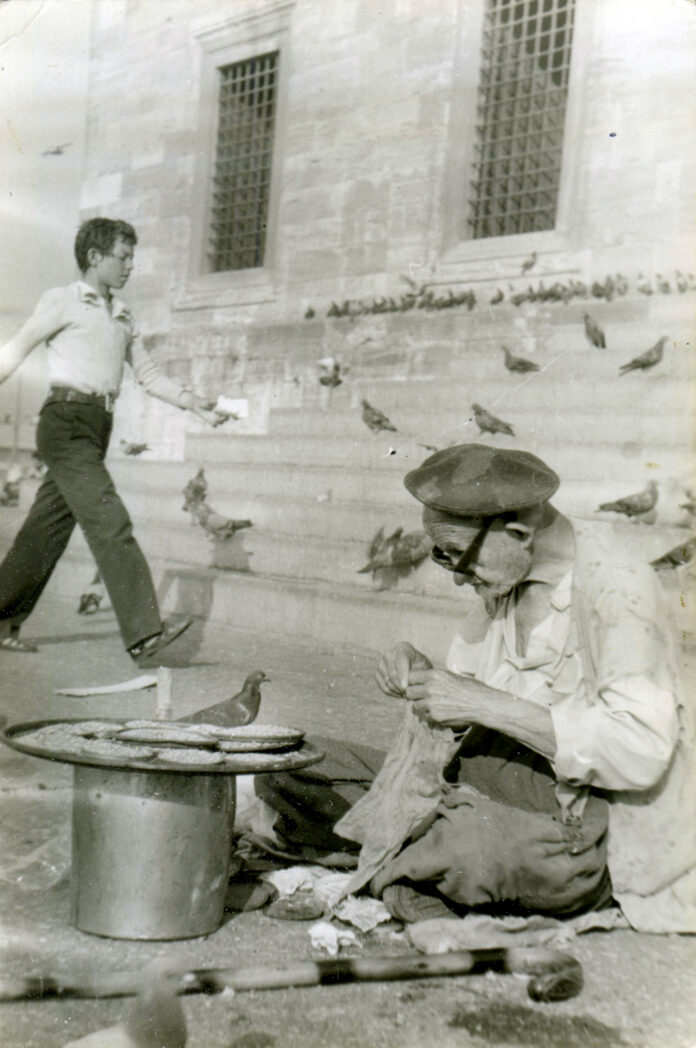© Copyright photo by Levent Ağaoğlu
The Fatih district of Istanbul is a collar embellished not only by the name but also by the spirit of its founder. The heartland of the Qur’an is Surah Fatiha, and the Fatih of Istanbul.
The most important feature of Fatih is that he was the first and last sultan to give such importance to the book and the library. He invited the people of science and opinion to Istanbul and thus placed the immortal power of the idea at the center of the administration. The names of these intellectuals are kept alive in the streets, avenues and neighborhoods of Fatih.
Fatih is the symbol of the immortal union of the idea and the soul. The Conqueror is the idea and the spirit.
Fatih district is a holy land that breathes the souls of the Fatihs who were martyred in 857 (Gregorian 1453) and buried where they were martyred.
The name of Dar’ül Funun should be started to be kept alive with Fatih Madrasa, which are the Science and Teology institutions that Fatih was the founder of.
The Süleymaniye Library, located in the Süleymaniye Mosque Complex of Kanuni, one of the grandchildren of Fatih, is the world’s largest library of manuscripts.
The capital of the world is the precious city of Istanbul, and the center of Istanbul is Fatih.
Scholars and intellectuals who grew up in Fatih have maintained the longest-lasting empire in the world on three continents with the power of their ideas.
The duty of the sons of Fatih the Conqueror is to be the seal of the conquests of ideas by reviving the same intellectual mission with a transcendent vision in the 21st century, and to spread it to the world by raising thousands of pioneering intellectuals; To keep Fatih the Conqueror alive.
Conqueror; Being assertive means keeping and living the spirit of Fatih. That spirit will live on forever in the lines of the National Anthem of Mehmet Akif from Akşemsettin neighborhood.
The Walled City of Istanbul is called Fatih. In fact, the district that developed around Fatih Mosque reflects the spirit of the Turks. Like Bilge Tonyukuk, Fatih’s life was spent on expeditions, either on the Adriatic coast or on the north and south of the Black Sea coast. The leadership dynamism revealed by these expeditions permeated the capillaries of the state and society.
This mood is most felt in Fatih district. How did 72 warships take a U-shaped route by land from the shores of the Bosphorus and land them on the shores of the estuary? This is the most concrete proof of how the impossible is turned into an opportunity.
Being a grandson from Rumelia, his mother from Macedonia Skopje, and his father from Bulgaria Plovdiv, having settled in Mutemet Street at the foot of Fatih Mosque, having spent his childhood there (I was on Mutemet Street until the age of seven, personality is formed in a child until the age of seven), this is me. It has been an important chance and opportunity that has shaped my whole life.
My childhood was spent in Mutemet Street between 1958 and 1965, until I was seven years old, then we moved to Vatan Apartment on Akşemsettin Street opposite the Ali Emiri Cultural Center (then it was a truck garden at the time). Fatih is my identity.
. Conqueror is Leadership. Two anecdotes are very meaningful after the Conquest of Istanbul. First, Fatih is curious, trying to find the body of the Byzantine Emperor who died in the war. The emperor fights like a soldier by taking off his clothes, and shows heroism, whereupon Fatih says, “Find the body of the Byzantine emperor”, the emperor is identified from his socks.
Later, Fatih had the heirs of the empire brought the cadres to the administration, and today the Murat Pasha Mosque in Aksaray is a mosque built by the heir of the Byzantine Empire and a convert to Islam. Later, another heir, Messiah Pasha, also serves as the grand vizier.
In addition, he has the heroes who died during the capture of the city in 857 with the Hijri calendar and 1453 with the Gregorian calendar, have their bodies built in the place where their bodies are found and orders them to be buried where they are. The leadership that manifests itself in these anecdotes is a leadership adorned with self-confidence, and this leadership ensured that the empire was in the capital for a very long time, like 600 years.
The cities of the Turks are intertwined with cemeteries, they have dead ends, they are lived with animals. Fatih entered Istanbul with the dogs. Animals are not at home, but on the streets. These phenomena are absent in Western cities and Arab cities. People and animals live together on the streets in this country. In this country, people are not separated by color, colors are only descriptive for geography; It is the Mediterranean, the Red Sea, the Black Sea, the Blue Danube, the Gökçe Sea (Caspian sea).
“Turkish cities have lost the concept of “cities with animals” with Ibn Khaldunian sociology. Turks should return to the vision of a city based on the views of Al-Farabi.” Lütfi Bergen @BergenLutfi
“Turkey is a love-born country that accepts and values living things as they are, without discrimination. The term Anaç and Dolu fits perfectly. Tribes and religions are clumps of land and its inhabitants deserve much more than the imperial world.” Danyal Hergünsel
In my poem Bazar, I tried to reflect the spirit of Fatih, the spirit of Fatih district, by going over the Wednesday market, which is the largest public market in Turkey, which is an open and huge market.





















